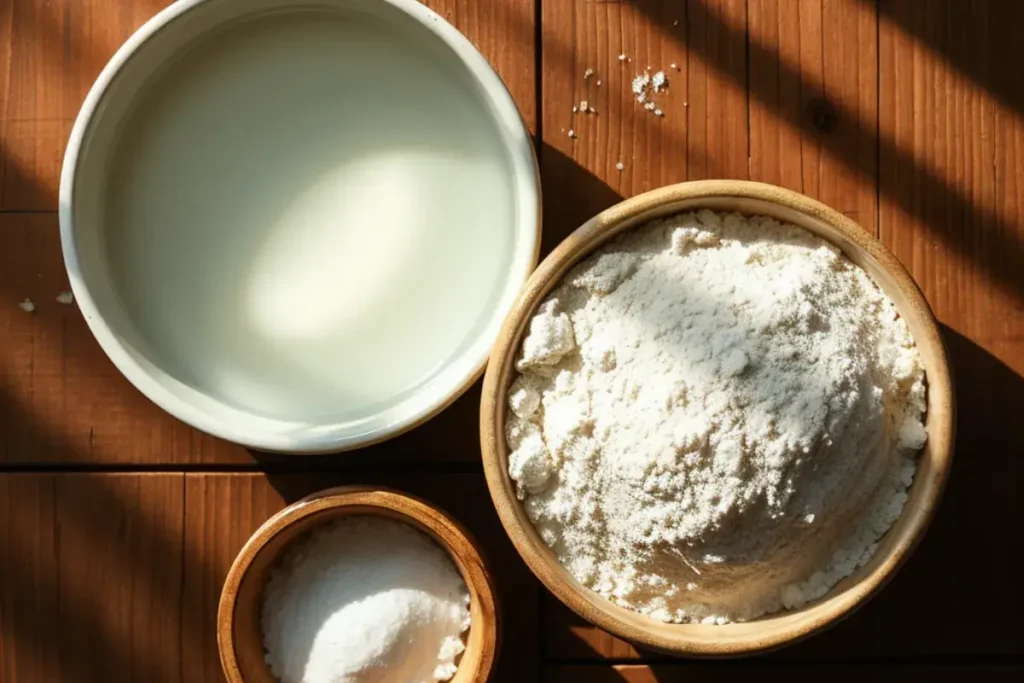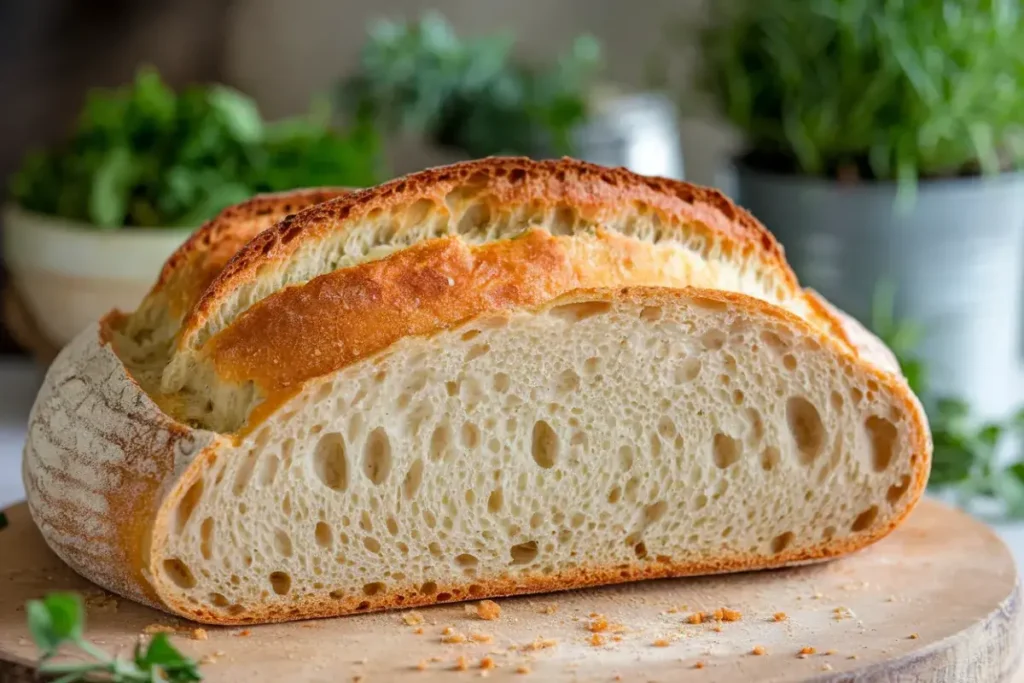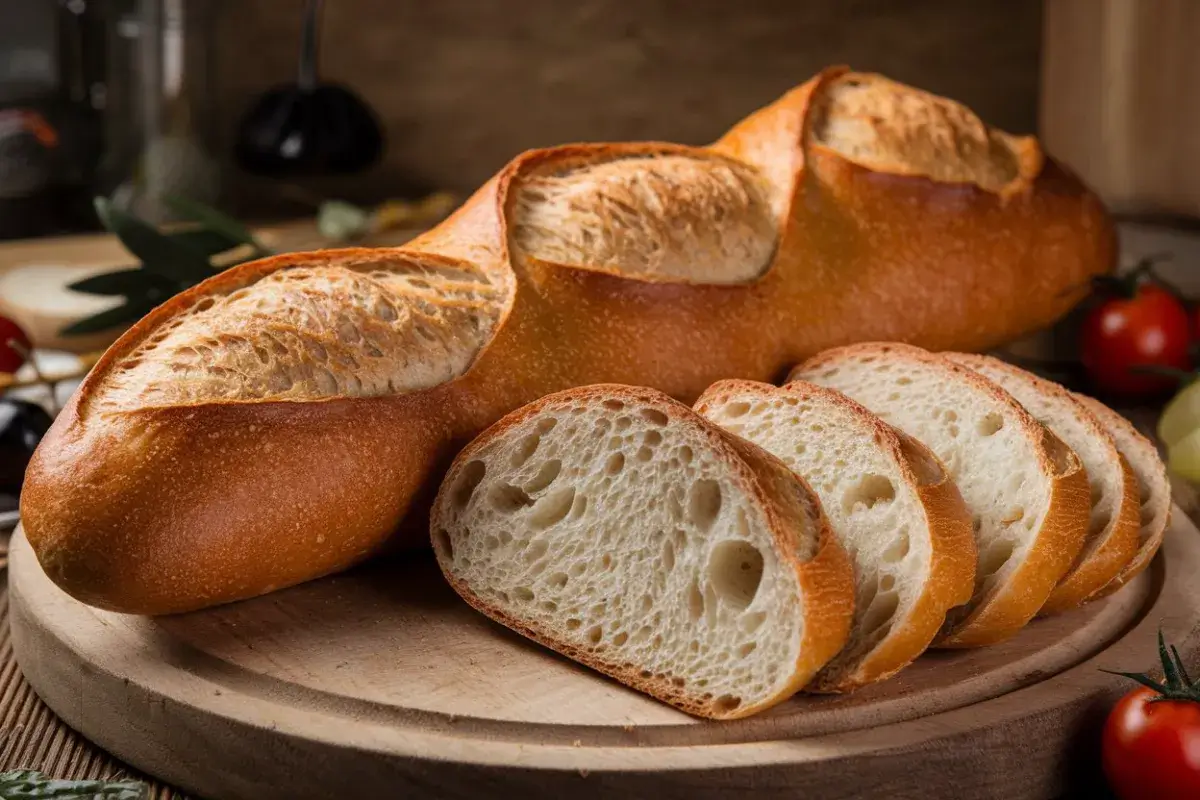French bread, especially the iconic baguette, is more than just a staple food—it’s a significant part of France’s culinary heritage. Whether you enjoy it fresh from a local boulangerie or paired with cheese and wine, French baguette stands out for its distinct flavor, texture, and cultural significance. But what exactly makes French loaf different from other bread types around the world?
Let’s explore the elements that give baguette its unique qualities, from its basic ingredients to the precise baking techniques, and understand how it became a cherished symbol of French tradition.
The History of French Bread
French baguette has a long history deeply rooted in the culture and politics of France. Its origins stretch back centuries, evolving from ancient bread-making methods into the modern-day baguette we know and love.
Origins and Tradition
Bread has been a dietary staple in France since Roman times. However, during the French Revolution, it gained more prominence as a symbol of equality and survival. In fact, bread was considered such an essential food that laws were enacted to ensure fair prices and maintain high-quality standards. The “Décret Pain” of 1993, a French bread decree, defines what can be labeled as traditional French bread. These regulations protect the purity of French baguette, ensuring it’s free from artificial additives.
French Bread in Modern Times
Today, French bread remains a core part of daily life, with French bakers continuing to follow time-honored traditions to maintain quality. The baguette, with its long, thin shape, crispy crust, and soft crumb, has become the quintessential representation of baguette, loved not only in France but worldwide.
Ingredients that Define French Bread
French bread’s distinctive quality comes from its simplicity. Unlike other types of bread that may include a range of additives or preservatives, baguette relies on just four basic ingredients:
- Flour
- Water
- Yeast
- Salt

Check out this simple French bread recipe to try at home.
Simplicity of Ingredients
French bakers emphasize quality over complexity. This simplicity allows the natural flavors of each ingredient to shine. French baguette avoids ingredients like sugar or butter, which are common in other breads, such as brioche. As a result, the taste of French baguette is light, crisp, and slightly nutty, without overwhelming richness.
Importance of French Flour
The type of flour used plays a significant role in creating French bread’s unique texture and flavor. French bakers often use specialized flours like T55 or T65, which differ from the all-purpose flour commonly found in other regions. French flour has a slightly lower protein content, which produces a softer, airier crumb. For more detailed information about French flour, you can check out French Flour Types Explained.
The Role of Yeast in French Bread
While yeast is common in bread-making worldwide, the way it is used in baguette elevates the final product.
Natural Leavening vs Commercial Yeast
In French baking, bakers often combine commercial yeast with natural fermentation. This method imparts a more complex flavor and subtle sourness to the bread, enhancing its overall taste profile.
The Slow Fermentation Process
Another key factor that sets French baguette apart is the slow fermentation process. Instead of rushing through proofing, French bakers let the dough rise slowly over several hours, sometimes even overnight. This extended fermentation develops a more profound flavor, improving the bread’s texture and making the crust crispier.
Shaping and Baking Techniques Unique to French Bread
The distinctive shape of French baguette is iconic, but it’s not just for appearances. Specific shaping and baking techniques help achieve the ideal balance between crust and crumb.
The Traditional Baguette Shape
The long, slender shape of a baguette provides more surface area for a crunchy crust to form. This also allows the inside to stay light and airy. Other bread shapes, such as the boule or batard, also have their place in French bakeries, but the baguette remains the most widely known and appreciated.
For a step-by-step guide to perfect shaping and baking, visit this French bread recipe.
Baking Methods and Ovens Used
The baking method plays a crucial role in French bread’s unique crust. Traditional French bakers use steam ovens, which help create a crispy, golden exterior without drying out the soft interior. Some bakers even prefer wood-fired ovens, adding an extra layer of rustic flavor to the bread. For an in-depth look into these baking methods, check out History of the French Baguette.
The Unique Texture of French Bread
One of the most distinctive features of traditional bread is its texture, which strikes a delicate balance between a crunchy crust and a light, airy crumb.
Crust vs. Crumb
The crust of a French baguette is thin yet crispy, making a satisfying crackle when broken apart. The crumb, in contrast, is soft and chewy, with an open structure of irregular air pockets. This contrast in textures—crusty exterior, tender interior—is achieved through a combination of proper fermentation and baking techniques.
Differences in Texture Compared to Other Breads
When comparing French loaf to other varieties, such as Italian ciabatta or German rye bread, the texture stands out immediately. Italian breads like ciabatta have a more moist, spongy crumb and a denser crust. Meanwhile, rye bread has a tighter crumb and lacks the characteristic lightness of French baguette. This makes French loaf ideal for sandwiches and as a complement to meals, where the bread’s texture enhances but doesn’t overpower the flavors of the food.
The Flavor Profile of French Bread
French bread’s flavor may seem simple at first bite, but its subtlety is what makes it remarkable. The absence of added sugar or fats allows the natural flavors to shine through.
Mild and Nutty Flavors
The flavor of French bread is mild yet complex, with a slightly nutty undertone due to the fermentation process. The slow fermentation allows the yeast to develop a variety of flavors, which contributes to the bread’s depth. The quality of the ingredients—especially the flour, yeast, and salt—plays a crucial role in creating these subtle, nuanced flavors.
The Absence of Added Sugars
Unlike sweeter breads like brioche or American sandwich bread, baguette does not include sugar. This gives it a more savory taste, making it a versatile option for a variety of meals, from breakfast to dinner. The minimal ingredients enhance the natural flavors, which pair well with cheese, meats, and spreads without clashing. For a contrast, try this rich Cottage cheese bread recipe, which includes dairy for a softer texture and richer flavor.”
Cultural Importance of French Bread
In France, bread is more than just food; it’s a cultural icon, deeply embedded in daily life and rituals. Every town, no matter how small, boasts its local boulangerie (bakery), where fresh bread is baked daily, often multiple times a day.
The Boulangerie Tradition
The French take their bread seriously, and the presence of a boulangerie in every neighborhood is a testament to that. For many French people, buying fresh bread from the local bakery is a daily ritual. The quality of bread is such an integral part of French culture that local boulangeries are considered community hubs, where locals meet and interact while waiting for their fresh loaves.
The Legal Definition of French Bread
Bread in France is not just governed by tradition but by law. The “Décret Pain” (bread decree) of 1993 legally defines what constitutes traditional French baguette. According to this law, traditional French bread must contain only flour, water, yeast, and salt, with no additives or preservatives allowed. This regulation ensures that French loaf maintains its authenticity and high quality.
French Bread vs. Other Types of Bread
To fully appreciate what makes French loaf different, it helps to compare it with other popular bread types. Let’s explore how French bread stacks up against its Italian and American counterparts.
French Bread vs. Italian Bread
Italian breads, such as ciabatta and focaccia, differ from French baguette in several ways. Italian breads often use olive oil, giving them a richer taste and softer texture. Ciabatta, for example, has a more porous crumb due to its higher hydration level, whereas French bread tends to have a denser crumb with larger, irregular air pockets. The crust of baguette is usually crisper than Italian bread, making it ideal for creating the classic crunchy baguette.
French Bread vs. American Bread
When compared to American bread, the differences become even more pronounced. Many American breads, especially store-bought varieties, contain added sugars, preservatives, and fats to extend shelf life and enhance sweetness. This results in a softer, more uniform texture and a sweeter flavor, which is quite different from the rustic and natural taste of French bread. Additionally, French loaf is typically baked fresh daily, whereas American bread is often mass-produced and meant to last for days or even weeks.
Why French Bread Goes Stale Quickly
One of the most commonly asked questions about French bread is why it goes stale so quickly. While its short shelf life might seem like a downside, there’s a very good reason for it.
Absence of Preservatives
French baguette is made with no preservatives or artificial ingredients. This is great for maintaining its purity and flavor, but it also means that the bread dries out faster than mass-produced loaves. The simple ingredients used in French bread—flour, water, yeast, and salt—don’t retain moisture as well as breads that contain oils, fats, or preservatives. As a result, a baguette might go stale within 24 hours.
The Solution: How to Properly Store French Bread
To keep baguette fresh, proper storage is key. Wrapping it in a linen or cotton cloth allows the bread to breathe while protecting it from drying out too quickly. You can also freeze French loaf to extend its life, though it’s best eaten fresh. To learn more about storing bread properly, visit How to Keep Your French Bread Fresh.
Health Benefits of French Loaf
French loaf isn’t just delicious—it can also be a healthy option compared to many other types of bread.

Nutritional Value of French Bread
Though French loaf is low in fat and sugar, it provides a good source of carbohydrates and protein. The use of simple ingredients means there are no hidden sugars or unhealthy fats, which makes French baguette a healthier option compared to highly processed varieties.
How It Compares to Other Types of Bread in Health
Compared to other breads, particularly those that contain enriched flours, sugars, and fats, French loaf has fewer calories and a more natural nutrient profile. The lack of preservatives also means that French bread is free from additives that can negatively affect health over time. Additionally, the fermentation process makes French loaf easier to digest and may even help improve gut health by promoting healthy bacteria.
Tips for Making Authentic French Bread at Home
If you’ve ever dreamed of making authentic French bread at home, it’s entirely possible with the right techniques and ingredients. Here are a few tips to get you started:
Key Techniques for Success
- Use high-quality flour: Opt for French-style flour like T55 or T65 for the best results.
- Perfect your fermentation technique: Allow the dough to ferment gradually, which enhances its flavors. This process can range from a few hours to overnight.
- Use steam in your oven: Adding steam during the baking process helps create that iconic crispy crust.
Common Mistakes to Avoid
- Overproofing: Allowing the dough to rise for too long can result in a weak structure, leading to a collapsed loaf.
- Under-kneading: Proper kneading develops gluten, which is essential for creating the bread’s structure. Without enough kneading, the bread won’t rise properly.
FAQs Section
- What makes baguette crust so crispy?
The crispy crust comes from steam during the baking process, which helps harden the exterior while keeping the interior soft. - Why does French baguette taste different from other types of bread?
French bread has a unique flavor due to its simple ingredients, slow fermentation, and the absence of added sugars or fats. - How is French flour different from other flour types?
French flour, such as T55 or T65, has a lower protein content than other flours, contributing to a lighter crumb and distinctive texture. - What are the main differences between a baguette and other French baguette?
While the baguette is long and thin with a crispy crust, other types like boule are round and have a thicker crust. - How can I make French loaf at home with a crunchy crust?
Use steam in your oven during baking and ensure a high oven temperature to achieve that perfect crunchy crust.

